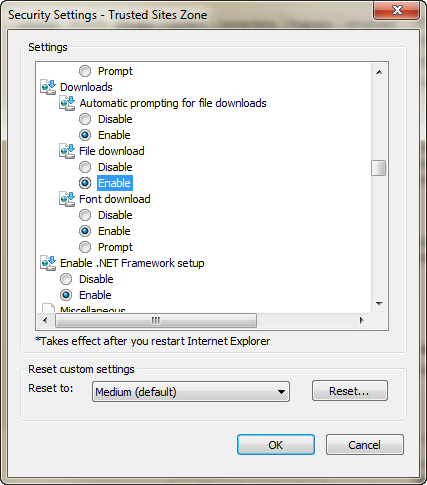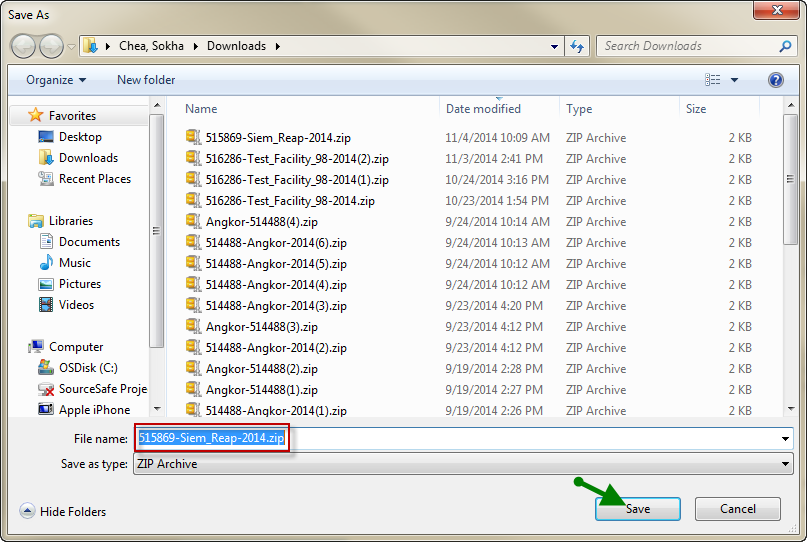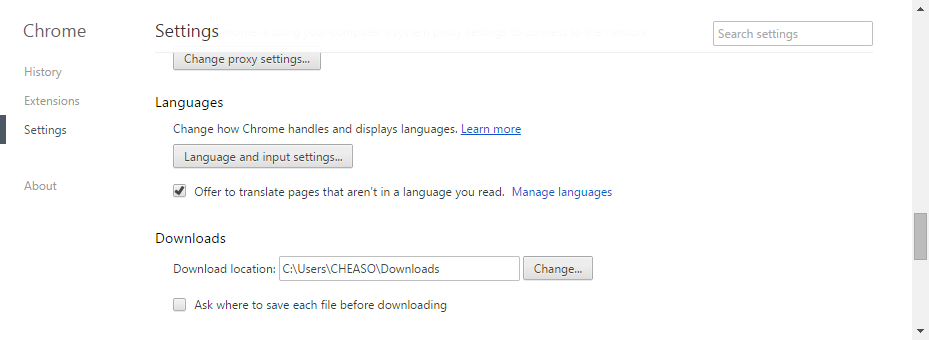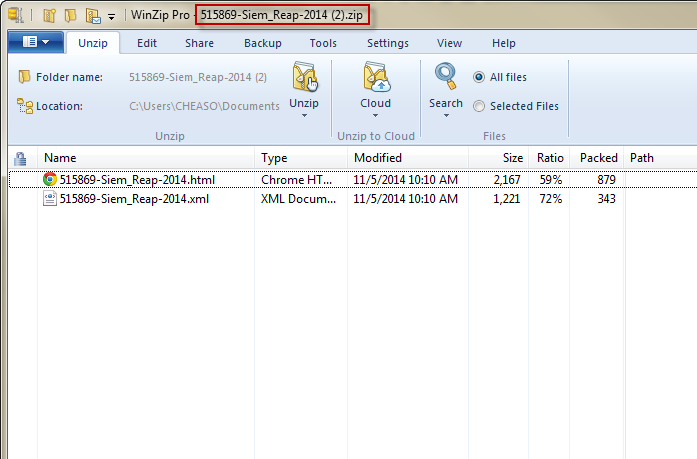Normally, when you save a the most recent version of your IVT input file you should be prompted to save or open the file you intend to download. If you choose to save the file you will be prompted to identify a folder where the file will be placed. Often browsers are set up to skip the folder selection process and this prompt will not appear. The result is that many users don't know for certain where their IVT inputs file as saved and have difficulty retrieving them. There are a couple strategies we recommend in these cases: 1) To ensure that you are prompted to download, refer to the information below regarding browser settings and saving processes for Mozilla Firefox, Internet Explorer, or Google Chrome browsers and 2) To locate a IVT file that has been previously saved we recommend a windows search procedure as described at the bottom of this page.
Other browsers and old versions of the listed browsers may behave differently than what is described on this page.
Changing the Save Settings or Default Save Location Used By Your Browser
MOZILLA FIREFOX
Settings
Open the browser and go to Tools\Options\General to either specify a consistent location (default is generally the Downloads folder) in which to save files or provide a prompt for you to specify a location.
Note that Firefox has a browser setting to provide a prompt or to designate a file location.
The following site provides additional Mozilla Firefox solutions if the above information does not resolve your issue: https://support.mozilla.org/en-US/kb/change-firefox-behavior-when-open-file
Saving Files
When you save a file using Firefox, you are prompted to Open or Save the file. After clicking SAVE, the file is automatically saved in the Downloads folder. The file will be saved using the following default structure: facility ID-facility name-reporting year.zip (e.g., 515869-Siem_Reap-2014(11).zip).
INTERNET EXPLORER (IE)
Settings
Open the browser and click Tools\Internet Options\Security. Select Custom Level. Scroll down to the Downloads heading and select Enable for automatic prompting, files, and fonts. If the file is downloaded, but there is no prompt, you likely have File download disabled. If no file is downloaded and you receive a security alert message, “Your current security settings to do not allow this file to be downloaded”, then Automatic prompting for file downloads is likely disabled.
The following site provides additional Internet Explorer solutions if the above information does not resolve your issue: http://247support.custhelp.com/app/answers/detail/a_id/8892/~/internet-explorer%3A-no-download-prompt-appears
Saving Files
When you save a file using IE, you are prompted to Open or Save the file. After you click SAVE, you are prompted to save the file in a specific location and asked if you want to open or save the file.
If you Save the file, you are asked if you want to replace the existing file.
GOOGLE CHROME
Settings
Open the browser and select Settings to either specify a consistent location (default is generally the Downloads folder) in which to save files or provide a prompt for you to specify a location.
Note that Chrome has a browser setting to provide a prompt or to designate a file location.
The following site provides additional Google Chrome solutions if the above information does not resolve your issue: https://support.google.com/chrome/answer/95574?hl=en-GB
Saving Files
When you click Save, the file is automatically saved in the folder.
How to Find a Lost Inputs File on Your Computer
To find a lost IVT inputs file we recommend using the file search feature on your computer. If this occurs, you can search for the saved file by following the steps outlined below.
The information below is for computers that use the Microsoft Windows operating system. For information on finding files for computers that use an Apple operating system, see http://support.apple.com/en-us/ht2470
1) Open File Explorer by clicking the File Explorer icon on your taskbar.
2) In the upper right of the Explorer Window there is a Search box. The search will look in all the folders and sub folders in the current location by Kind, Date Modified, Type and Name.
Firefox and Chrome: IVT files will follow the following default structure: facility ID-facility name-reporting year (number).zip (e.g., 515869-Siem_Reap-2014(4).zip).
IE: IVT files will follow the following default structure: facility ID-facility name-reporting year.zip (e.g., 514488-Angkor-2014.zip).
IVT will show the name of the files it is looking for as shown highlighted in red below. Use this file name in your search.
When you get your search results, look for the IVT file that matches the time and date specified by IVT. Note: the correct file name may be preceded by a number in parentheses if more than one version of the file is in the same folder.
Once you locate your file please take note of its location and use the browse button in the Load Inputs Verifier data box to select the most recently saved file.












